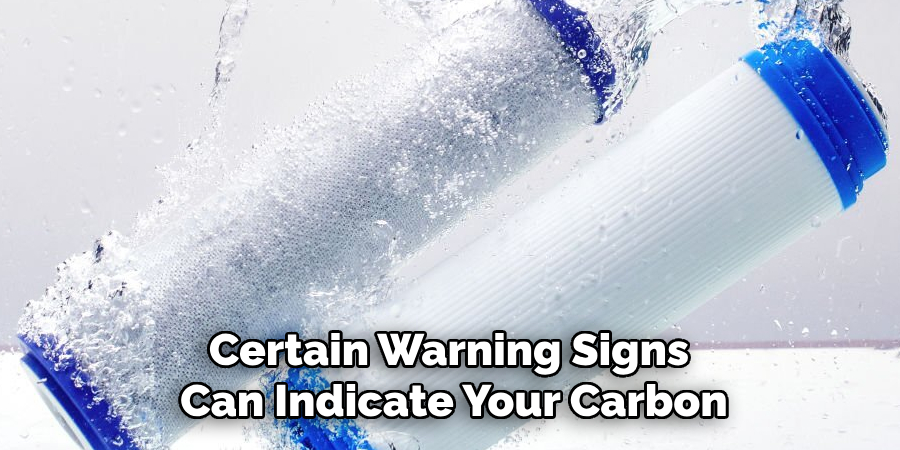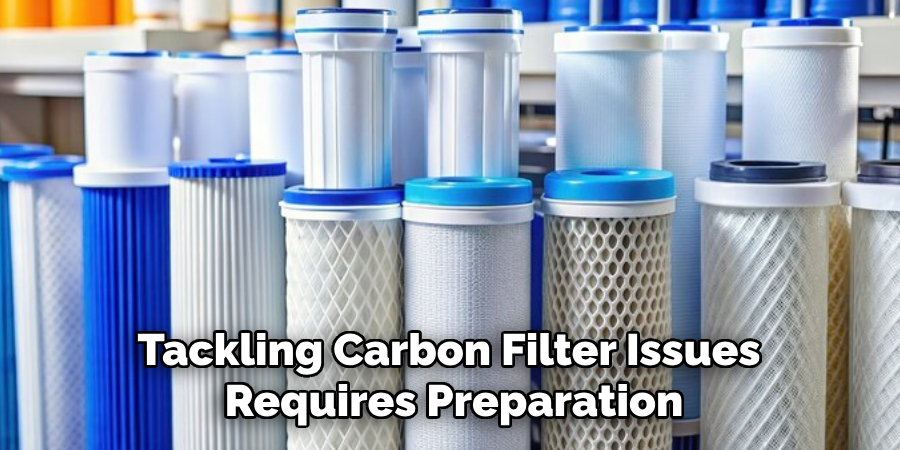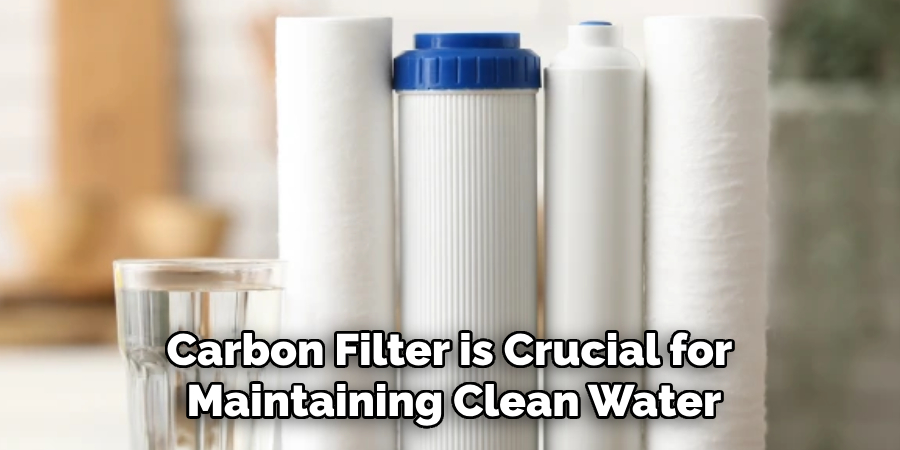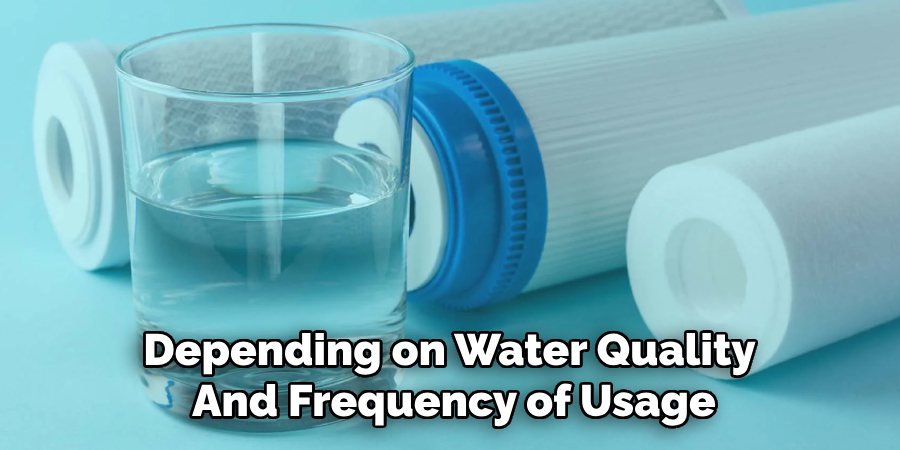A functional carbon filter is essential for clean, safe drinking water. It works by removing impurities, odors, and contaminants from the water, delivering a fresh and pure taste. However, like any component in your water purifier, the carbon filter can encounter problems such as blockages, reduced efficiency, or complete malfunctions. These issues, if left untreated, can compromise water quality.

Understanding the methods to fix or maintain your carbon filter saves time, money, and ensures continued access to clean water. This article provides a comprehensive guide on how to fix purifier carbon filter, with actionable tips for cleaning, repair, and replacement.
Understanding How Carbon Filters Work
Carbon filters play a critical role in water treatment by adsorbing impurities through a process called adsorption. This occurs when activated carbon attracts and traps chlorine, volatile organic compounds (VOCs), and other contaminants, ensuring only purified water reaches your glass. Activated carbon is made from materials like coconut shells or coal, which are processed to create a porous structure ideal for trapping impurities.
Despite its effectiveness, a carbon filter has a limited lifespan. Typically, it remains functional for three to six months, depending on water quality and usage. Over time, the pores in the activated carbon become clogged, rendering it less effective. Early signs of a failing filter include a noticeable decline in water flow, off-putting tastes, or visible sediment. Regular maintenance can extend its performance, but eventual replacement will be necessary.
Signs Your Carbon Filter Needs Fixing
Common Symptoms
Certain warning signs can indicate your carbon filter requires attention:

- Reduced water flow or blockage: If water is trickling out slower than usual, the filter may have accumulated too much debris.
- Unpleasant taste or odor: When the water smells chlorine-like or metallic, it often points to a saturated or expired carbon filter.
- Visible particles or discoloration: Sediments appearing in your water can signal that the filter material is compromised.
Monitoring these signs is crucial to ensure timely intervention before problems escalate.
Diagnosing the Problem
Not every water quality issue signals a problem with the carbon filter. Begin your diagnosis by checking other components:
- Inspect other filters: If your purifier has multiple filtration stages (e.g., a sediment or UV lamp filter), ensure those are functioning properly.
- Test water output: Disconnect the carbon filter and observe whether water flow improves. If so, the problem lies with the filter.
- Listen for leaks: Gasket or seal issues around the filter housing could also contribute to system inefficiency.
Once you’ve isolated the issue, you can determine whether cleaning, repair, or replacement is most appropriate.
Tools and Supplies You’ll Need
Tackling carbon filter issues requires preparation. Gather these essential tools and materials beforehand:

- Basic toolkit: Wrench, pliers, and screwdrivers for disassembling components.
- Replacement parts: Keep gaskets, O-rings, and a spare carbon filter on hand for quick fixes.
- Cleaning agents: Use mild soap or a vinegar-water mix for cleaning the filter housing and components. Avoid abrasive chemicals that can damage the filter.
- Protective gloves: Ensure hygiene and prevent contamination during maintenance.
Having the right supplies not only simplifies the process but also ensures effective results.
How to Fix Purifier Carbon Filter: Step-by-Step Guide
Preparing Your Purifier for Cleaning
- Turn off the water supply: Locate your purifier’s shutoff valve to prevent leaks during disassembly.
- Drain the system: Open the faucet or outlet to release any remaining water from the purifier.
- Access the carbon filter: Carefully unscrew or unclip the filter housing to remove it. Have a towel or bucket ready for spillage.
Cleaning the Filter
- Rinse thoroughly: Run warm water through the filter, shaking gently to dislodge contaminants.
- Deep clean: Submerge the filter in a bowl of warm water mixed with a mild detergent. Gently scrub with a soft brush if needed.
- Sanitize the housing: Clean the interior casing with a vinegar solution or approved disinfectant to sterilize it.
Give the filter and housing ample time to dry before reassembling.
Reassembling and Testing
Once the system is clean:
- Reinsert the filter: Ensure it’s seated correctly and secured tightly to avoid leaks.
- Reassemble the housing: Double-check connections and gaskets for proper alignment.
- Test functionality: Turn the water supply back on and allow water to flow through the filter for a few minutes. Monitor for consistent flow and clarity.
When to Replace the Carbon Filter
Replacing the carbon filter is crucial for maintaining clean water and prolonging the life of your filtration system. Here are a few signs it’s time to replace the filter:

- Water flow decreases: As the filter becomes clogged with impurities, water may struggle to pass through it at a normal rate.
- Foul odor or taste in water: If you notice an unusual smell or taste in your drinking water, it could be a sign that the carbon filter needs to be replaced.
- Visible debris or discoloration: Check the surface of your carbon filter for buildup of sediment or particles, which can indicate that it’s no longer effectively filtering out impurities.
It’s recommended to check your carbon filter regularly, at least once a month, to ensure that it’s operating effectively. In addition, most manufacturers recommend replacing the filter every 3-6 months, depending on usage and water quality.
Common Issues and How to Fix Them
Filter Leaks
Leaks often stem from damaged or improperly sealed components. To resolve this:
- Replace worn gaskets or O-rings.
- Tighten housing connections without overtightening, which can lead to cracking.
Water Flow Problems
Blockages may arise from sediment buildup within the filter. Combat this by flushing the system with clean water or using a soft brush to dislodge stubborn debris. If blockages recur, consider improving pre-filtration to reduce sediment entry.
Persistent Odors or Bad Taste
If cleaning fails to eliminate off-flavors, the carbon itself may have deteriorated. Replacing the filter entirely resolves the issue, restoring the water’s refreshing quality.
Preventive Maintenance Tips
While it’s important to address issues with your water filter as they arise, there are also steps you can take to prevent problems from occurring in the first place. Here are some preventive maintenance tips for keeping your water filter in top condition:
- Regularly clean and replace pre-filters: Pre-filters help remove larger particles from the water before it reaches the main filter. Over time, these filters can become clogged with sediment or debris. Cleaning or replacing them regularly will ensure that they continue to effectively protect your main filter.
- Follow manufacturer’s guidelines for replacement: It’s important to adhere to the recommended replacement schedule specified by the manufacturer for your specific water filter model. This will ensure that your filter continues to function at its best and provide you with clean water.
- Observe changes in water quality: Keep an eye out for changes in the taste, color, or odor of your filtered water. If these characteristics become noticeable, it could be a sign that your filter needs to be replaced. Additionally, if you notice a decrease in water flow from your tap, it may also indicate that the filter is due for replacement.
- Consider investing in a system with multiple filters: Some advanced filtration systems come equipped with multiple filters designed to remove different types of contaminants. This can provide an added layer of protection and allow for more thorough filtration of your drinking water.
Alternative Solutions if Problems Persist
If you’ve tried replacing your filter and maintaining your filtration system, but are still experiencing issues with the taste or quality of your drinking water, there are a few alternative solutions to consider.
- Use bottled water: While it may not be the most sustainable option, using bottled water can provide a temporary solution if you’re concerned about the quality of your tap water. Just be sure to recycle the bottles after use.
- Install a home reverse osmosis system: Reverse osmosis systems use a semipermeable membrane to remove contaminants from water. They can be installed under your sink or as a whole-house system for comprehensive filtration.
- Boil your water: If you’re mainly concerned about bacteria and other microorganisms in your water, boiling it for at least one minute can effectively kill most of these harmful organisms.
- Use a water filter pitcher: These pitchers come with built-in filters that can help reduce contaminants in tap water. While they may not be as effective as reverse osmosis systems, they are an affordable and convenient option.
- Invest in a faucet-mounted filter: Similar to water filter pitchers, faucet-mounted filters attach directly to your sink and can provide filtered water on demand. They typically have multiple stages of filtration, making them more effective than basic pitcher filters.
Frequently Asked Questions
Can I reuse a carbon filter after cleaning?
Yes, provided the filter’s structure remains intact. Cleaning is a sustainable solution to prolong usability.
How often should I clean my carbon filter?
Clean every one to two months, depending on water quality and frequency of usage.

What’s the ideal way to store replacement filters?
Store them in a dry, cool environment, away from direct sunlight, to preserve their activated carbon.
Conclusion
A well-maintained carbon filter safeguards your water purifier’s functionality, delivering clean and healthy water daily. By following this guide, you can address common filter issues efficiently. Remember, regular maintenance doesn’t just improve performance—it also prolongs the life of your purifier and ensures long-term savings. Prioritize these practices to enjoy consistently pure water and greater peace of mind. Thanks for reading our post about how to fix purifier carbon filter.
